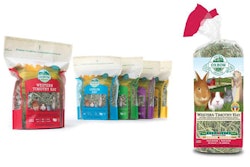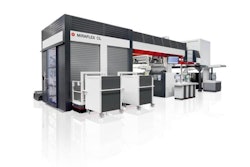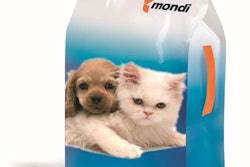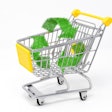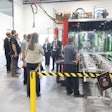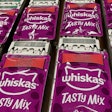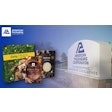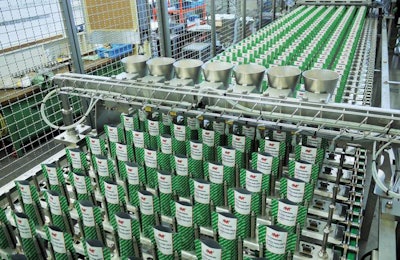
The idea of sustainability has permeated nearly every facet of business. The larger issues of climate change and concern for the environment have resulted in consumers looking more carefully than ever at their impact on the Earth, including what they buy, how they buy it and who they buy it from. The pet food industry is certainly not immune to the pressures of passing the sustainability test, and as manufacturers do their best to meet customer expectations, packaging companies are focusing on what they can do, both to help manufacturers meet their goals and to satisfy consumers with the results of their own products.
“As a packaging company, our role is to provide a quality product that helps protect the contents of the packaging, while ensuring that it will arrive to the end user undamaged with the rigors of today’s distribution channels,” said Robert Hepburn, vice president of sales at Pacific Bag Inc. “To be sustainable is to be consistent and maintain a high standard of durability and quality, and is a commitment to continue to contribute toward a more sustainable path.”
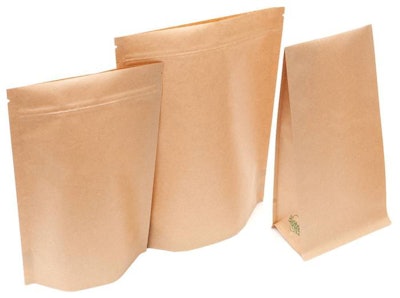
Courtesy Pacific Bag Inc.
Pacific Bag’s Biotre line of packaging includes Biotre film, which is made from 60% by weight renewable wood pulp and 40% polyethylene from fossil fuels with an additive designed to make it break down over five to 10 years.
And there’s no question that sustainable packaging is gaining momentum, according to Jessica Lanter, director of product development for Plastic Packaging Technologies (PPT). “Brand owners are looking for packaging solutions that more closely relate to the organic products, ingredients and natural products that are in the package,” she said. “Consumers are now not only much more aware and cognizant of the product ingredients, they are now looking for the whole package—natural, organic products in a natural, sustainable package.”
Ross Bushnell, president of Mondi Jackson LLC, said listening to those consumers is key. “The pet food industry, like the broader food industry, must meet the needs of consumers who are increasingly concerned about environmental sustainability as well as issues such as food safety and the use of natural and organic ingredients,” he said. “As a result, there is a greater focus on supply chain transparency into many facets of pet food, including packaging.”
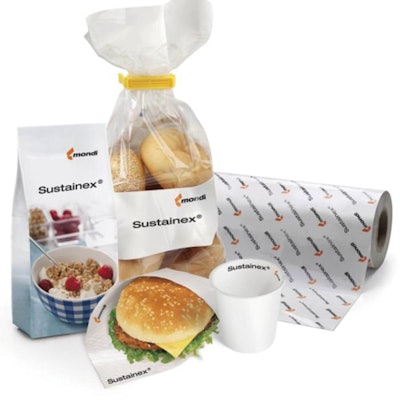
Courtesy Mondi Group
Under the name Sustainex, Mondi sells biodegradable and sustainable packaging materials featuring excellent sealability, gas and grease barrier, and thermal resistance, according to the company.
It’s not just greater transparency consumers want, however, and the pet food packaging segment is stepping up with tangible plans and products to meet sustainability head-on. “This past year, Coveris has seen an increased commitment from the pet food industry to actual sustainability projects in the pet food market,” said Dave Long, vice president of business development for Coveris. “There seems to have been a shift from discussing options to really pushing forward live, meaningful projects.”
To that end, Coveris has expanded its plastic bag products with an eye towards reuse and recycling. “Coveris has new and exciting offerings in the plastic bag arena that directly impact sustainability,” said Long. “Coveris’ recent major expansion in the plastic packaging pet food area is arming the company to deliver premium pet food packaging and sustainability options.”
As might be expected, reuse and recycling are two significant themes in sustainable packaging. Pacific Bag carries several sustainable packaging lines for pet food and treats that focus on being compostable and biodegradable. The company’s compostable natural kraft paper tin-tie bags are made of kraft paper outside and PLA liner on the inside. The lining is made from sugar in corn starch, and the bags can be disposed of in a curbside composting bin or home composted, according to the company.
Pacific Bag also offers Biotre film, which is made from 60% by weight renewable wood pulp and 40% polyethylene from fossil fuels with an additive designed to make it break down over five to 10 years. Beyond that, “Pacific Bag is currently developing a new Biotre film that will eliminate the use of fossil fuel-based materials that will be made from 100% renewable resources,” said Hepburn. “We are very excited about the development of this new material. We are currently testing the material with several of our customers and hope to launch to the full market in the next year.”
Mondi is also exploring the use of more renewable and recyclable materials, according to Bushnell. “We have a high-density pouch that can be recycled in a No. 2 recycling stream,” he said. “It is not a product that can be printed as glossily as some other laminates, but for pet food brands and consumers who are environmentally conscious, it presents a greener solution. We also are focused on enhanced packaging performance to extend shelf life and prevent food waste and spillage. In addition, we are committed to reducing emissions into the air, water and land. Flexible packaging offers some sustainability advantages over rigid packaging, such as cans, in that it can require considerably less energy to produce, less space to store, and less fuel and dunnage to transport.”
Diversification of products and overall resource conservation seem to be prevailing themes across the pet food packaging segment when discussing sustainability, whether the company’s focus is on equipment or materials. “A trend in the packaging industry is adding new product formats to a company’s product line,” said Julian Stauffer, packaging division manager of Packaging Technologies & Inspection (PTI). “Pet food canning companies are interested in diversifying into tubs or pouches. Dry pet food companies are diversifying from paper bags to polywoven or plastic bags. All formats, whether dry or wet pet food, are getting smaller.” PTI offers packaging equipment solutions to fill and seal dry or wet pet food in tubs, pouches and bags for a variety of shapes, sizes and materials, as well as retort processing equipment using technologies for energy and water conservation, according to the company.
“Multivac strives to develop packaging solutions that contribute to resource conservation, as well as a higher degree of efficiency and ergonomics,” said Matt Malott, vice president of sales and marketing for Multivac. “Our packaging solutions focus on extending the shelf life of a product, which greatly reduces overall product waste. We also lead the industry in developing machines with a focus on conservation. Multivac has developed e-concept machines that eliminate the need for costly and inefficient water and air, relying solely on electricity to operate. This is key especially for areas experiencing water limitations or rationing.”
PPT is on the leading edge of sustainable packaging and is working closely with resin and film suppliers to develop innovative solutions, according to Packaging Engineering Manager John Kennedy. “In the meantime, there are great sustainable strategies for ‘using less,’ right-sizing the packaging to reduce extra space in the packaging and, most importantly, transitioning away from rigid packaging to flexible packaging to save money and immediately recognize some big sustainable benefits,” he said.
Sonoco offers Tempo accelerated shelf life modeling, which helps identify barrier needs and optimal packaging trials at the front end of the shelf life testing process, increasing speed-to-market and retaining product integrity, according to the company. “Tempo shelf life modeling is a process that allows for quick, accurate estimates of how a package will perform under various conditions with a given product type,” said Sonoco. At a time when consumer needs are growing more complex, new processes are being developed to ensure the need for innovation is balanced with the need to get a working product out to market.
In the end, sustainable solutions in pet food packaging may be all about finding balance, said PPT Vice President and General Manager Dave Potter. “Consumers want a sustainable package, but brand owners need packaging material that provides a significant shelf life and also enables the product to really stand out on the shelf,” he said. As more consumers do their research and focus on issues beyond product and price, all segments of the pet food industry—including packaging—must continue to innovate and move forward to meet customer needs.
Sustainable pet food packaging trends: renew, compost, recycle
“There are several new exciting and innovative trends in sustainable consumer packaging in the pet food world,” says Robert Hepburn, vice president of sales a Pacific Bag Inc., and they can largely be broken down into three categories: renewable materials, compostable materials and recycling programs. Hepburn provided further insight into the categories’ place in packaging:
Renewable plant-based plastics:
Plant-based plastic production is on the rise. Materials such as PLA and other cellulose-based films are being developed to either replace their fossil fuel brethren or used in conjunction with traditional fossil fuel-based materials where specific performance needs must be achieved. These plant-based materials reduce the impact on environment as they are made from renewable plant-based materials such as corn, beets, wood and other natural materials.
Compostable materials:
A significant environmental impact of the renewable plant-based plastics is they can often be composted. However, as these films/materials tend to be thin so they can break down in the composting environment, they must be used in conjunction with other traditional materials. Oftentimes, these polymers are used with natural kraft paper materials. The combination of these materials allow the bags to meet manufacturer and retailer needs but still allow bags to be compostable.
Recycling:
Recycling of any food packaging can be challenging. There are different rules and regulations in most cities, states and municipalities on which products can be recycled and which cannot. This makes it difficult to the general consumer to know, as well. It’s important that manufacturers and retailers use recycling symbols on their packaging so the consumers know where and how to dispose of their bags. There is lots of great information on the web on what the symbols mean. You can also ask your packaging supplier about what symbol should be used on their packaging.
Further information on packaging trends



